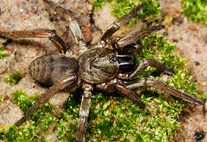Abstract
A recent molecular, morphological and distributional analysis of Monomorium rothsteini demonstrated that it comprises many separately evolving lineages that could be recognised morphologically and/or genetically based on mitochondrial DNA sequences. Based on these results M. rothsteini is revised, resulting in four species being brought out of synonymy (M. bogischi Wheeler, M. leda Forel, M. humilior Forel and M. subapterum Wheeler) and 18 new species recognised: M. broschorum n. sp., M. capeyork n. sp., M. eremoides n. sp., M. eremum n. sp., M. geminum n. sp., M. hertogi n. sp., M. hoffmanni n. sp., M. kidman n. sp., M. maryannae n. sp., M. merepah n. sp., M. mitchell n. sp., M. oodnadatta n. sp., M. pilbara n. sp., M. speculum n. sp., M. stagnum n. sp., M. tenebrosum n. sp., M. topend n. sp., M. torrens n. sp. Monomorium rothsteini v. doddi Santschi is recognised as a valid synonomy of M. rothsteini s.str. Along with M. rothsteini Forel s. str., there are now 23 described species in the complex, however it likely comprises many more species given the number of additional CO1 lineages and morphotypes that remain unresolved due to incomplete data. Biological notes are provided as well as a key to workers, descriptions, images and distribution maps for each species.

